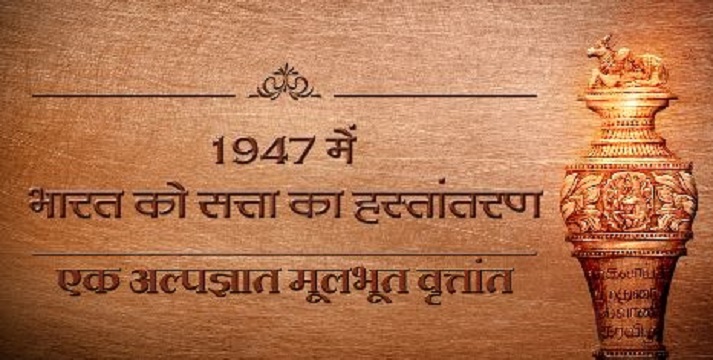What is ‘Sengol’ that is to be installed at the New Parliament, watch
The ‘Sengol’ is a gold-studded sceptre, which Jawaharlal Nehru received as a symbol of the transfer of power during the independence of India in the year 1947
The ‘Sengol’ is a gold-studded sceptre, which Jawaharlal Nehru received as a symbol of the transfer of power during the independence of India in the year 1947. Today after 75 years, ‘Sengol’ is being remembered as the Govt is recreating the entire event that happened in 1947.
The ‘Sengol’ which is now a historic spectre, has been kept in the Prayagraj Museum. This symbol of sovereignty is to be installed in the new parliament.
Union Home Minister Amit Shah has shared a video, a short film, which describes this historic Sengoi.
यह लघु फिल्म पवित्र ‘सेन्गोल’ के ऐतिहासिक महत्त्व को दर्शाती है और बताती है कि कैसे यह अंग्रेजों से भारत को सत्ता हस्तांतरण के क्षण का प्रतीक बना।#SengolAtNewParliament pic.twitter.com/4xVbdmjMnh
— Amit Shah (@AmitShah) May 24, 2023
As per the short film, ahead of the transfer of power during independence, Viceroy Lord Mountbatten asked Jawaharlal Nehru what would symbolise the transfer of power. Nehru did not have an appropriate answer to this query. Accordingly, he consulted C Rajagopalachari. Rajagopalchari did thorough research on this topic to find a befitting answer.
During his course of research, he found that during the transfer of power of the Chola dynasty a sceptre was sanctified and blessed by high priests and it was handed over to the next king. This was the perfect symbol of transfer of power. Rajagopalchari provided this information to Nehru and he accepted it as a perfect answer to symbolise the transfer of power.
Accordingly, the Vummidi Bangaru Chetty jewellers in Chennai were given the assignment and the family crafted the Sengol. It was later handed over to Jawaharlal Nehru on August 14, 1947 in a formal ceremony held just 15 minutes before the country’s first Prime Minister made the historic speech.




 Kalinga AI
Kalinga AI